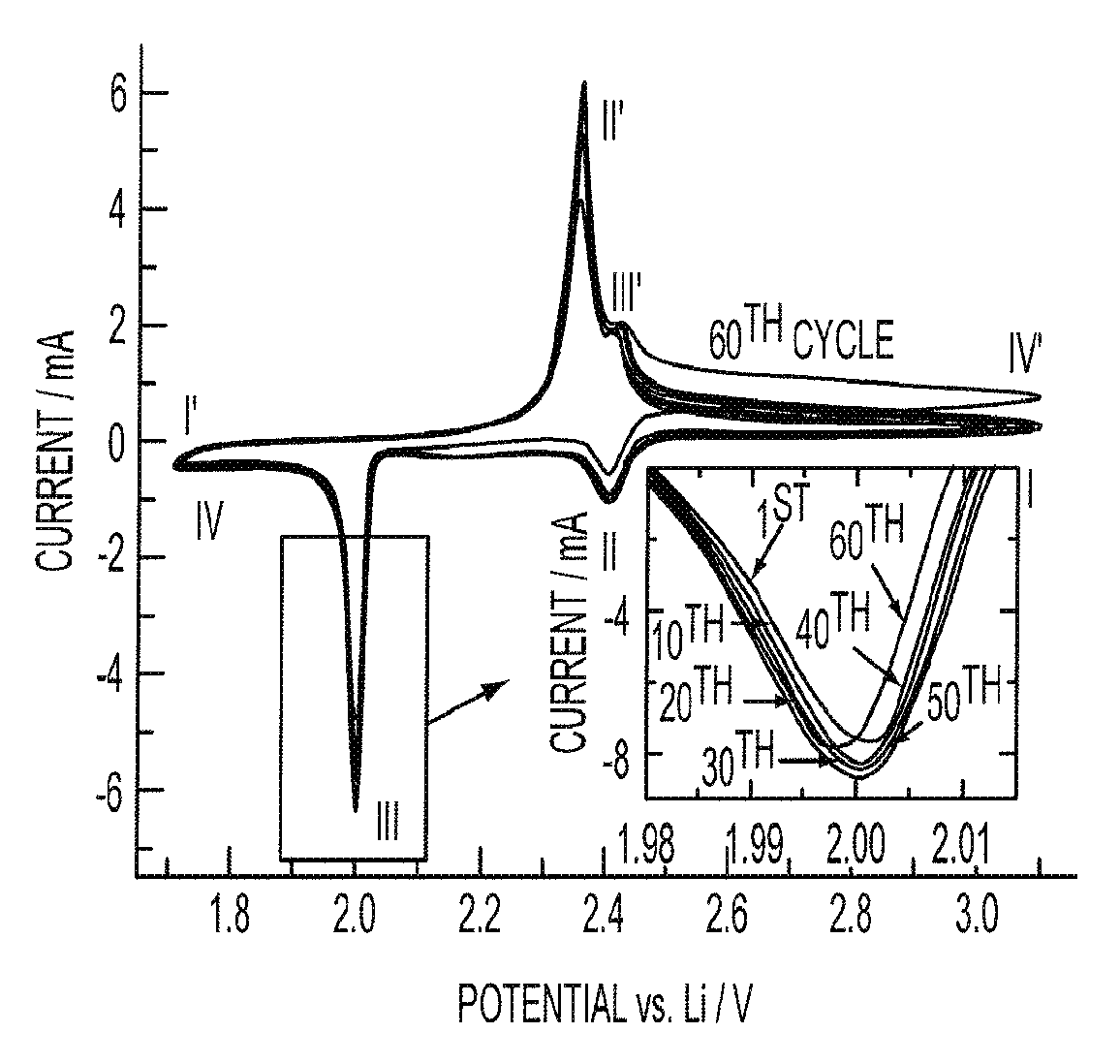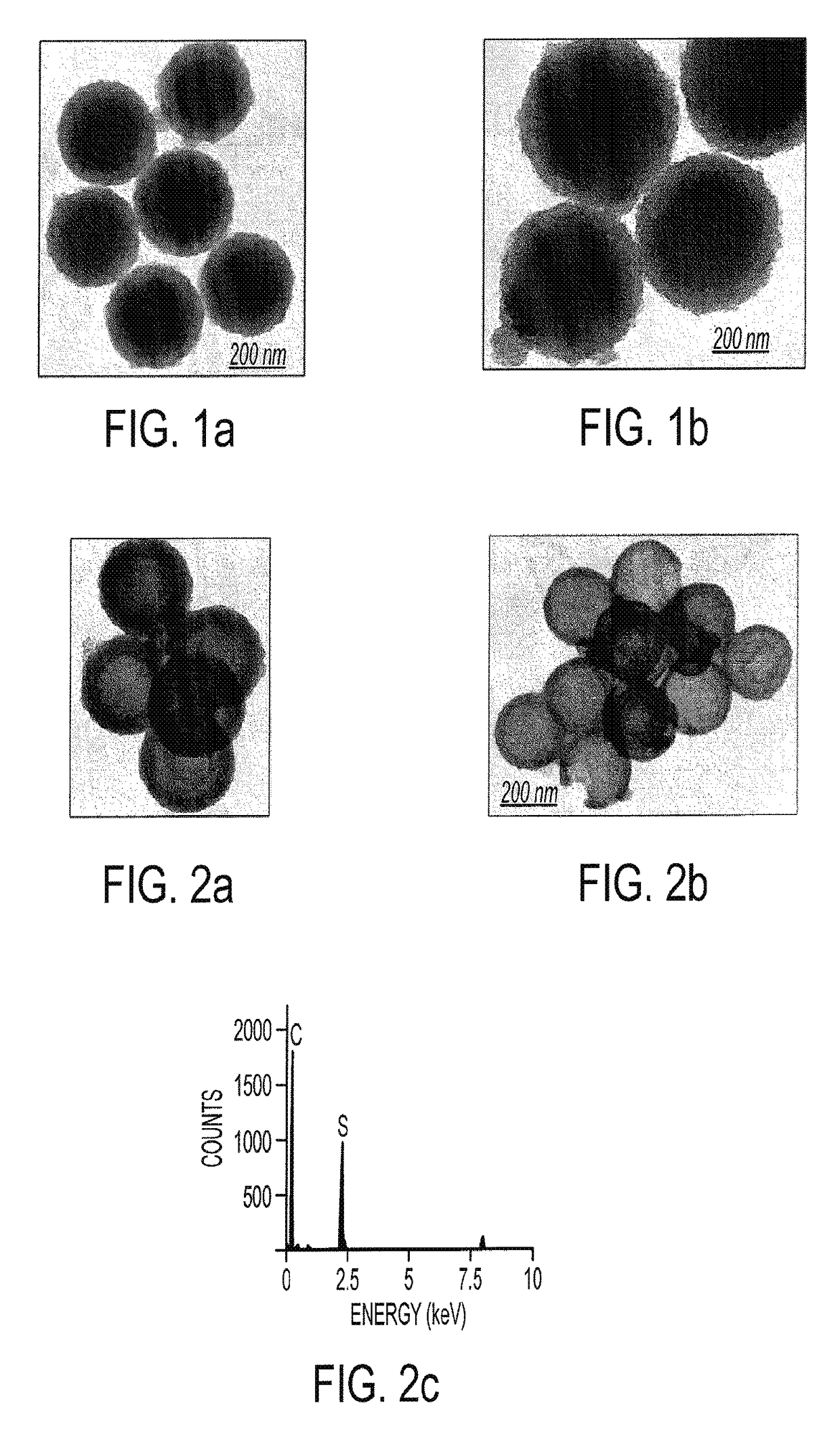Sulfur containing nanoporous materials, nanoparticles, methods and applications
a technology applied in the field of nanoporous materials and nanoparticles, can solve problems such as the problematic implementation of li—s secondary battery systems for high-power applications, and achieve the effect of improving performance and properties
- Summary
- Abstract
- Description
- Claims
- Application Information
AI Technical Summary
Benefits of technology
Problems solved by technology
Method used
Image
Examples
first embodiment
[0046]This particular first embodiment includes a facile and scalable method for synthesizing mesoporous hollow carbon material shapes (i.e., capsules such as but not limited to spheres) that encapsulate and sequester a sulfur material (and in particular an elemental sulfur material) in their interiors, and also within their porous shells. The interior void space, the mesoporous shell structure, a chemical make-up of the shell and a methodology used to infuse sulfur into the carbon material shapes are designed with four specific goals under consideration. The four specific goals include: (i) an intent to maximize an amount of sulfur material sequestered by the carbon materials capsules; (ii) an intent to minimize lithium polysulfide dissolution and shuttling in an electrolyte; (iii) an intent to preserve fast transport of lithium ions to the sequestered sulfur by ensuring good electrolyte penetration; and (iv) an intent to facilitate good transport of electrons from the poorly condu...
second embodiment
[0066]As illustrated in FIG. 15, a synthetic scheme shows an overall process employed in fabricating Silica / PBD / Sulfur / PEG nanoparticles in accordance with the First, amine functionalized silica nanoparticles were synthesized by utilizing a modified Stober process. To functionalize the silica outer layer with amine groups, 3-trimethoxysilypropyl-diethylenetriamine was used. Also in order to lessen the aggregation of the silica particles polyethylene glycol methyl ether was used with the silane. To control the size of the nanoparticles, different amounts of ammonium hydroxide were used. Then, the amine functionalized silica particles were used as an anchor to attach dicarboxy terminated polybutadiene strands. The mono functionalized polyethyleneglycol was then attached to the free carboxy terminal. The process was performed using N,N-dimethylformamide as the solvent. Alternative synthetic schemes are also considered that may reverse ordering of the alternate levels of functionality ...
PUM
| Property | Measurement | Unit |
|---|---|---|
| vapor pressure | aaaaa | aaaaa |
| temperature | aaaaa | aaaaa |
| pressure | aaaaa | aaaaa |
Abstract
Description
Claims
Application Information
 Login to View More
Login to View More - R&D
- Intellectual Property
- Life Sciences
- Materials
- Tech Scout
- Unparalleled Data Quality
- Higher Quality Content
- 60% Fewer Hallucinations
Browse by: Latest US Patents, China's latest patents, Technical Efficacy Thesaurus, Application Domain, Technology Topic, Popular Technical Reports.
© 2025 PatSnap. All rights reserved.Legal|Privacy policy|Modern Slavery Act Transparency Statement|Sitemap|About US| Contact US: help@patsnap.com



